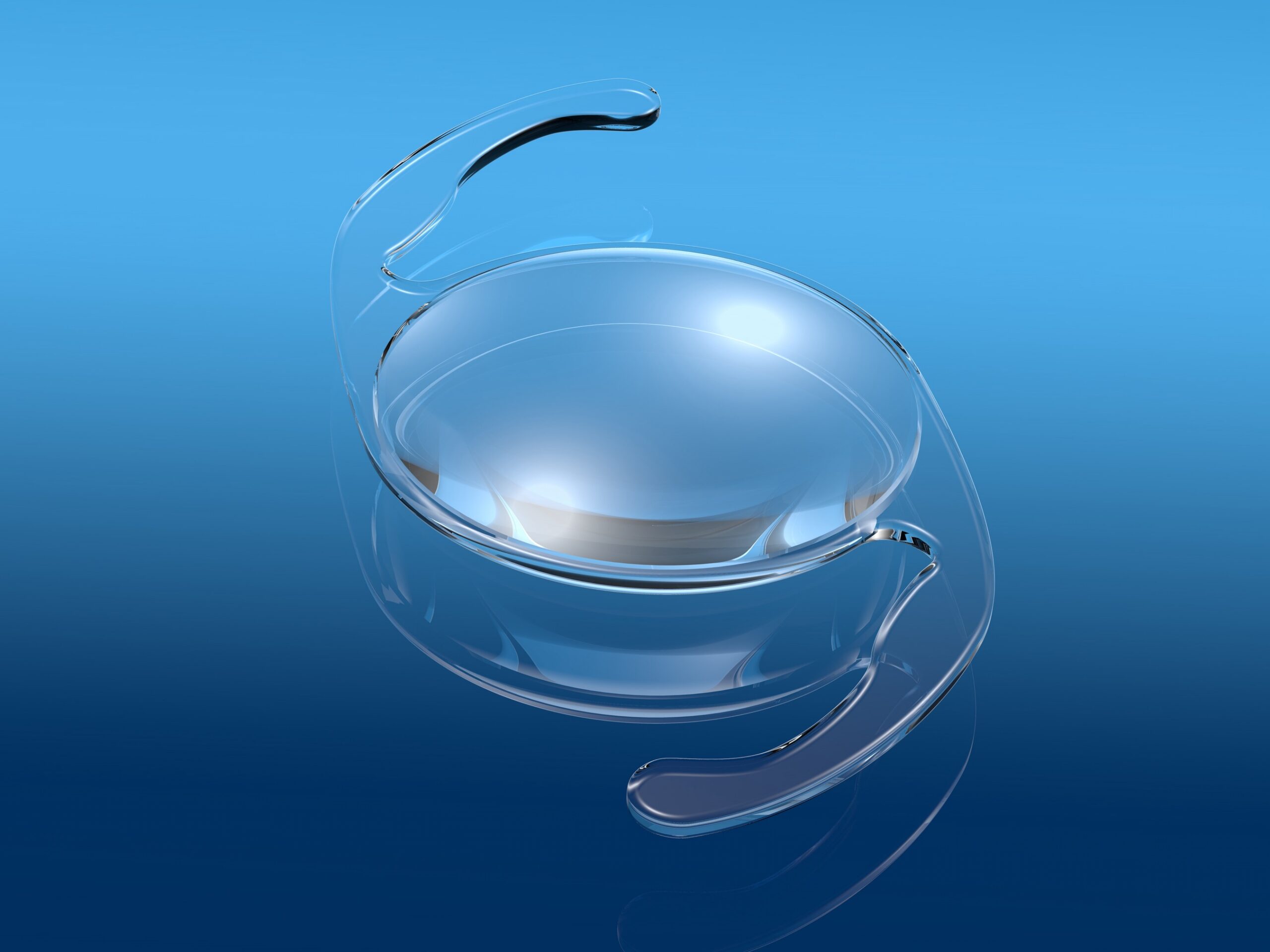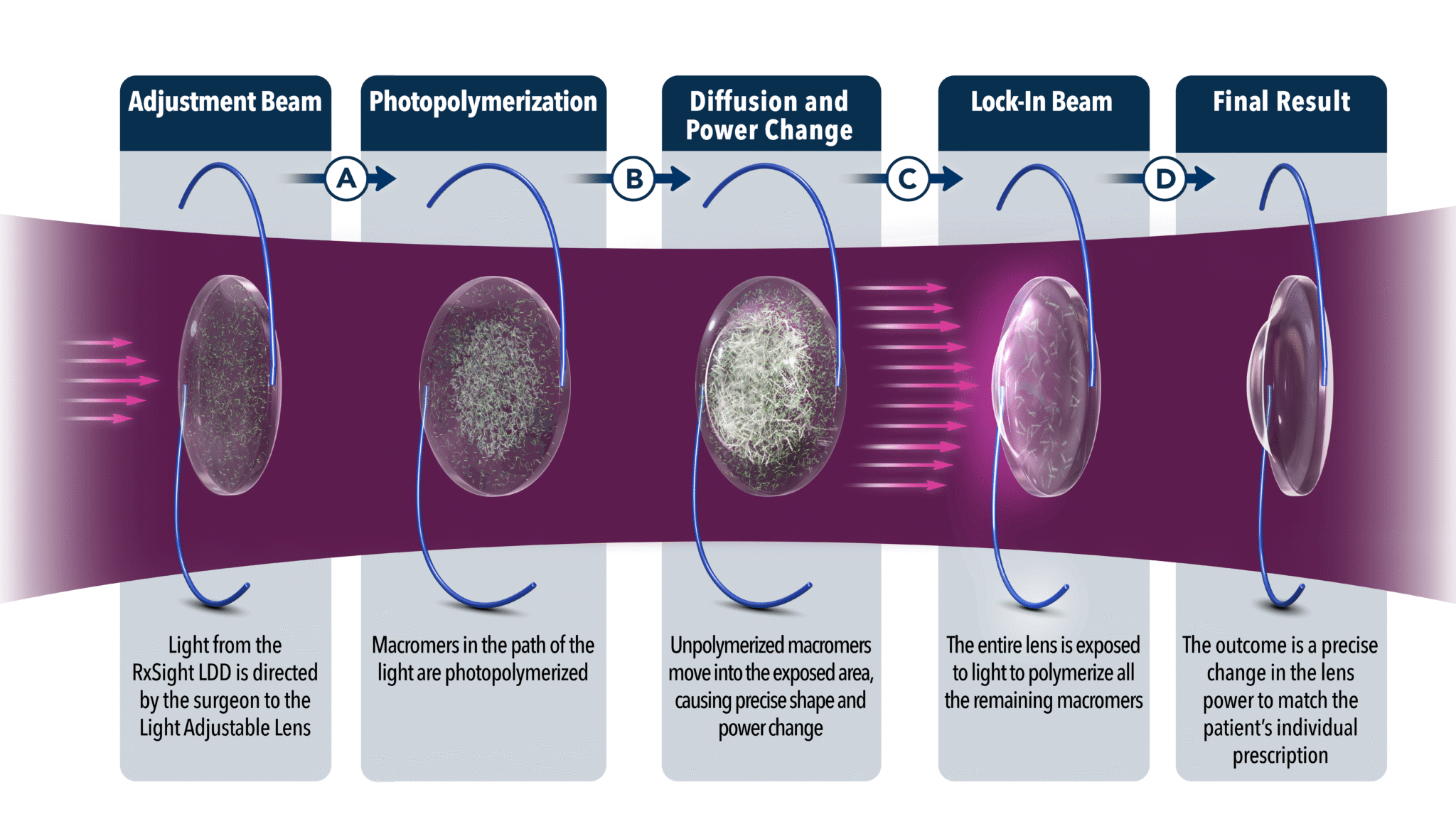
What are Cataract Lenses?
If you need cataract surgery, we will remove the natural lens within your eye and exchange it with a new artificial intraocular lens (IOL). IOLs, also known as lens implants, are extremely advanced and can effectively function like your natural lens. Often, the new lens may improve ongoing refractive issues as well. To help you determine which type of IOL works best for you, we will schedule an appointment called lens calculations.
During this painless consultation, each eye will be measured with a multitude of sophisticated computers and lasers that customize the IOL selection for each individual patient.We will assess several factors, including your overall eye health, visual acuity, and daily activities that will help us select the best type of IOL for you.
At Ophthalmology Associates of the Valley, our goal is to help patients improve their quality of life. If you experience symptoms caused by cataracts, please schedule an appointment with us to learn more about the advanced treatments we offer.
Which lens is best for cataracts?
The type of lens that will be chosen for you depends on the information we obtain during your diagnostic exams and your comprehensive eye evaluation. Below, you will find descriptions and explanations of some of our most popular premium lens options. Our goal is to help educate each patient so that the correct decision is made prior to surgery. Every patient has different visual needs and desires. The key question that needs to be answered is how important is it to the patient to reduce the need for distance glasses? Secondly, how important is it to the patient to reduce the need for reading glasses in addition to distance glasses?
What are Standard IOLs?
Insurance companies typically cover the standard IOL that is placed during the surgery. If patients want to reduce their dependency on glasses, they may have out-of-pocket expenses. About 50% of our patients choose a standard IOL and approximately 50% opt for a premium IOL. Below are the types of premium IOL’s available. Remember, we are here to answer your questions and concerns. We understand how confusing this can be. Ultimately, cataract surgery is a life-changing operation with an extraordinarily high satisfaction rate!
What are Toric IOLs?
In a healthy human eye, the cornea should have a perfectly round shape – like a basketball. But when you have astigmatism, the cornea attains an oval shape – somewhat like an American football. So, people with astigmatism tend to suffer from blurred vision at distance and near because images do not focus sharply on the retina.
Toric IOLs are similar to their soft contact lens counterparts and glasses prescriptions in that they have different levels of powers in various meridians of the lens to rectify the asymmetric power of the cornea.
Cataract surgery with a Toric IOL placement is similar to any other cataract surgery with a standard IOL. Before the procedure, the surgeon needs to choose the most suitable Toric IOL power, as well as the necessary orientation of the implant in the eye to successfully correct astigmatism. Toric IOLs typically feature special markers on the peripheral to help surgeons identify the orientation of the astigmatism correction in that specific lens.
After implantation, the surgeon rotates the toric IOL to align the astigmatism correction for the best results. Although the use of a toric IOL during the surgery does not necessarily increase the likelihood of complications, a misaligned IOL can result in blurred vision that then needs to be corrected with glasses, contact lenses, LASIK, or rotation of the toric IOL. This is why we utilize ORA (Optiwave Refractive Analysis) during surgery. The ORA takes a quick and precise measurement to confirm the IOL power before implantation. Once the toric IOL is implanted, the ORA then also assists your surgeon to make sure that the toric IOL aligned correctly on the correct axis. Sometimes multiple measurements are required to confirm that the astigmatism is treated as best as possible.
What are Symfony-Extended Depth of Focus IOLs?
One of the most popular intraocular lenses (IOLs) that we offer is the Tecnis Symfony lens by Johnson and Johnson Vision (formerly American Medical Optics and then Abbot Medical Optics). The Tecnis Symfony IOL is the first and only extended-depth-of-focus lens currently on the market and will correct the vision in patients both with and without astigmatism.
The Tecnis Symfony lens is not a multifocal lens. A multifocal lens works by splitting light into separate distinct focal points on the retina. Your brain then learns to use the appropriate focal point depending on your activity. In contrast, the Tecnis Symfony IOL transmits light over a range of distances creating an elongated focus, hence the term, extended depth of focus. Patients who elect the Tecnis Symfony IOL need to understand that they may require reading glasses for prolonged close work or reading smaller print. If you cannot bear the thought of using reading glasses for any activity then the Tecnis Symfony lens is NOT for you. Patients who spend a lot of time using iPhones, iPads and other electronic devices enjoy the vision provided by the Symfony lens.
The lens provides excellent distance and intermediate vision with an improved level of near vision but it does not replace glasses for prolonged or fine close work. Golfers and tennis players are especially good candidates for the extended depth of focus lens because they don’t want to lose track of the ball as it travels. In our experience, patients who elect the Symfony lens find that the neuroadaptation process continues for at least the first three months. As a result, our patients are often happier three months out from surgery than their first week or two!
Many patients ask about cost. Many things in medicine are often not covered by insurance such as specialized hearing aids and dental implants and such is the case with premium intraocular lenses such as the Tecnis Symfony IOL. However, with added cost comes added value! In particular, patients will have a fuller range of high-quality vision and will be able to wear glasses less often after premium IOL surgery. You are making a choice for the rest of your life that impacts you on a daily basis. So, if you spread the cost out over the rest of your life, what is that worth from a value perspective?
What are Panoptix Trifocal IOLs?
A new premium intraocular lens, known as the Panoptix lens by Alcon, was approved by the FDA for use in the United States. This is a trifocal-style lens implant that does not behave like trifocal eyeglasses in that there are not discrete areas of the lens that one must manually look through to see clearly at different distances. Rather, this lens enhances the vision after cataract surgery to enable focusing without blurry zones and to reduce the need for glasses for many, if not most, activities. The Panoptix lens permits the patient to see far away, at, arm’s length, and up-close. This is obviously wonderful for anyone trying to minimize their dependence on eyeglasses!
The Panoptix IOL is a diffractive IOL that allows the lens to transmit 88% of light to the retina which improves vision. The lens has a 4.5mm diffractive zone that reduces the dependence of the efficacy of the lens on pupil size so it works in different sized pupils. It has a near focal point at 16 inches, an intermediate focal point at 24 inches and another focal point for optical infinity.
Better near vision is the major advantage of this IOL over its predecessors. Additionally, the Panoptix maintains high-quality distance vision, intermediate vision, and night vision. 99% of patients would recommend the IOL again which is extremely impressive. Only 2.4% of patients had “most bothersome” night vision complaints such as glare, haloes, or star-bursting. Unfortunately, the IOL is not paid for by insurance providers. Furthermore, not every patient is a candidate for these types of premium IOLs. It’s best to discuss your options with your surgeon.
What is monovision or blended vision?
Presbyopia is a condition that begins around the age of 45. Accommodation is the eye’s incredible ability to change focus from distance to near and back to distance instantaneously. As accommodation worsens, people can become very frustrated by the need to put on glasses or remove them in order to see properly when reading or doing work that requires near sight.
Monovision, or sometimes referred to as blended vision, is an option that tricks your brain into seeing both near and distant objects well. One eye is treated for distance seeing, and the other is treated for near seeing. The brain is then able to adjust automatically to use the appropriate eye depending upon the distance of the object you’re viewing.
Monovision can be achieved with contact lenses or surgery. (Unfortunately, it rarely works only with glasses.) People who are having LASIK or cataract surgery can opt to be simultaneously treated for monovision. A patient over 45 years old can receive monovision and often put their reading glasses away. For people who find it necessary to put on their reading glasses every time they need to read their watch, a price tag, or the numbers on their cellphone, monovision can be terrific.
Remember though, the brain and the eye notice no difference between monovision with contact lenses, LASIK surgery or cataract surgery. If you expect perfect distance vision and perfect near vision, however, monovision will be disappointing. As has been said, “There are no free lunches.” Thus, if you want less dependency on all types of glasses and understand that neither distance nor near vision will be perfect, you may be a good candidate for monovision.
What is a Light Adjustable Lens?
The Light Adjustable Lens (LAL) is an intraocular lens placed at the time of cataract surgery that allows the surgeon to adjust the power AFTER cataract surgery is finished. Prior to this IOL’s approval, we extensively measured the patient’s eyes with multiple computers, lasers, and imaging devices to customize the IOL for each patient. We also have ORA to help make decisions during surgery and to fine tune astigmatism correction after the IOL is placed.
The Light Adjustable Lens is a completely new procedure. The LAL appears just like a typical foldable lens implant inserted through a small incision at the time of cataract surgery. The inside of the LAL is made of photosensitive monomers that, when exposed to a special light, can migrate to the periphery or center to correc residual nearsightedness, farsightedness, and astigmatism.
After the surgery is completed, the patient waits about 1-2 weeks and, once refractive stability is achieved, the lens is treated with a specially designed laser. Up to 4 different treatments can be performed to reduce refractive error as close to the desired result as possible. The treatments are painless and take 1-2 minutes per eye.
The best candidates for the LAL are previous LASIK, PRK, and RK patients, as well as patients who have previously done monovision (blended vision) or may be interested in monovision (blended vision). The way for patients to think about this IOL is that it is basically doing LASIK or PRK after cataract surgery without having to do a separate surgery. The only drawbacks are the lack of a multifocal version, the need to wear UV protecting glasses for up to a month at all times outdoors until the lens is finally “locked” into place, and the cost.

What is The ORA System?
Cataract surgery is now really more like refractive surgery in that we are trying to minimize the need for glasses postoperatively. Cataract surgery is simply a lens exchange. The old, cloudy lens is removed, and it is replaced by a new intraocular lens (IOL). The new IOLs all look alike but vary in power. Thus, every eye needs a slightly different power based on the length and the shape of the eye. Every piece of information available is helpful in hitting the postoperative target whether it’s a good distance, good near, or good for both distance and near.
Besides the multiple preoperative calculations done in the office, ORA is an extraordinary precise tool that helps to hit that target. After the old, cloudy lens is removed, the ORA takes multiple measurements in just a few seconds to help decide the power of the IOL that should be used in the eye.
ORA is very helpful in straightforward surgeries, but it’s most helpful in eyes that have previously had refractive surgery (LASIK, PRK, and RK) as well as in astigmatism patients. Previous LASIK patients usually have demanding expectations because they have been independent of glasses after their LASIK surgery. Unfortunately, the preoperative calculations are challenging in these cases because of the corneal shape changes created by the previous refractive surgery. The cataract surgery is identical in these patients, but it’s just hitting the prescription target that can be tough but the end result has nothing to do with the success of the surgery!
The other situation in which ORA is most helpful is in treating astigmatism patients with toric IOL’s. About 1/3 of the population has enough astigmatism to benefit from a toric IOL. When we do modern LASIK surgery, the excimer laser treats the cornea based on trackers that utilize iris imagery. When treating astigmatism at the time of cataract surgery, we align the IOL with the cornea. ORA helps decide if the IOL is lined up correctly or needs to be rotated. The ORA is rotated until the astigmatism is reduced as much as possible. Even a single degree of shift decreases the astigmatism correction by 3%!

Which cataract lens is right for me?
When it comes to selecting your new lens, you will have the chance to discuss your concerns and perspective. We will listen closely to your needs and help determine what lens works best for you.
Additionally, during your diagnostic exams and consultations, our expert ophthalmologists will collect all the necessary information they need for your vision and eye health. We will also have an in-depth conversation to review your daily activities and your visual acuity goals, such as reading or driving without needing corrective lenses. Once we have holistically assessed your condition, health, and preferences, including if you have refractive issues or astigmatism, we can start to develop a tailored plan for lens replacement surgery.
Together, we will decide which IOL is the most helpful for you. If you need cataract surgery for both eyes, our experienced ophthalmologists may even suggest different IOL types for each eye.
What to Expect after cataract lens surgery
Before your lens replacement surgery, our ophthalmologists will thoroughly outline reasonable expectations and let you know how much your vision will increase with the new lens or lenses. Each patient is unique, and everyone will have various results, depending on their original cataract condition and lens selection. Generally, patients are often very happy with the outcomes of their cataract removal surgery and typically, they tend to have even better vision than before. After your surgery, the results are permanent and will not deteriorate compared to your natural lens.
However, it’s important to understand that for some patients, they may experience a posterior capsular opacification (PCO) or a “secondary cataract.” This happens when a cloudy layer of scar tissue forms near your lens implant. A PCO is easily and safely eliminated with a straightforward YAG laser treatment.
What is an IOL Exchange?
Our professionals at OAV are well-equipped to handle any potential problems that may arise after your cataract procedure. If the lens begins to malfunction or happens to dislocate, we can recommend a procedure called an IOL exchange. This procedure removes the original implant and replaces it with a new working one. We will take all necessary steps to ensure that your vision is as clear and comfortable as possible, no matter the circumstances. Contact our staff immediately if you believe that your IOL may be malfunctioning.
Cataract Lens FAQ
Get a clearer view of the world
Undergoing laser cataract surgery and receiving a new artificial IOL may seem intimidating, but it also has excellent, life-changing opportunities for patients. In addition to no longer experiencing blurry or cloudy vision, patients may even obtain restored or improved eyesight without glasses.
If you have fuzzy vision or you were recently diagnosed with cataracts, please schedule an appointment at Ophthalmology Associates of the Valley with one of our expert eye doctors.





